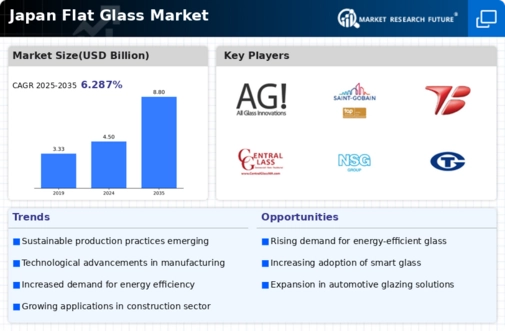The Japan Flat Glass Market is characterized by a robust competitive landscape driven by a growing demand for high-quality glass products in various sectors, including construction, automotive, and electronics. Companies are continually innovating to develop advanced glass solutions that cater to consumer preferences for energy efficiency, aesthetics, and durability. The market is significant in size and scope, accommodating both large multinational corporations and smaller local firms. These players engage in strategic initiatives such as collaborations, research and development investments, and sustainability practices to enhance their competitive positions.
The landscape is influenced by fluctuating raw material costs, technological advancements, and changing regulatory frameworks related to building materials and energy standards.Lixil Group stands out as a formidable player within the Japan Flat Glass Market, leveraging its extensive experience and strong brand reputation in the construction and home improvement sector. The company has effectively harnessed its strengths in innovation, focusing on research and development to produce energy-efficient and high-performance glass products tailored to the unique needs of residential and commercial applications. Its comprehensive portfolio encompasses various flat glass solutions that emphasize durability and aesthetic appeal.
Lixil Group's established distribution networks and partnerships provide it with a solid market presence, allowing the company to meet the demands of diverse customer segments across Japan efficiently.Kojima Industries Corporation plays a significant role in the Japan Flat Glass Market, bolstered by its focus on the production and processing of glass products tailored to specific industrial and consumer needs. The company offers a wide range of products, including tempered glass, coated glass, and laminated glass, that cater to various applications in architecture and interior design.
Kojima Industries Corporation’s commitment to quality and technological innovation enhances its competitive edge, enabling it to establish a loyal customer base. The company's strategic growth initiatives include investments in modernization and increased production capacity to meet domestic demand. Additionally, through mergers and acquisitions, Kojima Industries Corporation has expanded its product offerings and operational capabilities, thereby strengthening its market position in Japan’s flat glass industry.


















Leave a Comment